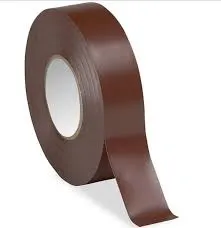The Importance of Gym Floor Tape Enhancing Safety and Organization
In the vibrant world of fitness and sports, the environment plays a crucial role in ensuring safety, organization, and functionality. One often overlooked component of gym management is the use of gym floor tape. This simple yet effective tool can significantly enhance the training experience for athletes and fitness enthusiasts alike. Let's explore the various benefits and applications of gym floor tape in athletic spaces.
What is Gym Floor Tape?
Gym floor tape is a specialized adhesive tape designed for use on gym floors. It comes in various colors, widths, and designs to accommodate different sports and activities. Made from durable materials, this tape adheres well to various types of flooring, including hardwood, vinyl, and concrete. Its primary purpose is to create visual boundaries and guides for players, coaches, and trainers, making it an essential component in any athletic facility.
Enhancing Safety
One of the primary benefits of gym floor tape is safety. In high-intensity sports, such as basketball or soccer, players often run at high speeds, which increases the risk of injury from unexpected collisions or falls. By marking out clear boundaries for courts, fields, and other training areas, gym floor tape helps players understand the playing limits, reducing the chances of accidents. For example, in basketball, the three-point line can be easily marked with bright, visible tape, ensuring players are aware of their shooting zones.
Additionally, gym floor tape can be used to highlight hazardous areas or equipment, such as weightlifting zones or areas designated for stretching. This clear demarcation keeps athletes organized, minimizes confusion, and leads to a more efficient training environment.
Promoting Organization
A well-organized gym leads to enhanced performance and a more inviting atmosphere for members and athletes. Gym floor tape can be employed to create designated spaces for different activities, such as cardio, strength training, or group classes. This organization not only helps members navigate the gym more effectively, but it also fosters a sense of order and professionalism.
gym floor tape

On top of that, gym floor tape can be used to manage the flow of foot traffic. By guiding athletes along specific pathways and directing them to entrance and exit points, the tape can improve the overall experience by reducing congestion and ensuring that everyone can move freely and safely.
Versatility in Design
One of the most appealing aspects of gym floor tape is its versatility. It is available in a variety of colors and patterns, allowing gyms to customize their layouts according to their branding or the specific needs of different sports. For instance, brightly colored tape can be used for children's programs, making it engaging and fun while also providing clear visual cues for young athletes.
Moreover, gym floor tape can easily be modified or moved as needed. If a gym’s layout changes or if new activities are introduced, the tape can be repositioned without damaging the floor underneath. This adaptability makes it a cost-effective solution for sports facilities.
Maintenance and Durability
Another significant advantage of gym floor tape is its durability. Designed to withstand heavy foot traffic and the wear and tear of rigorous training sessions, it can last for extended periods before needing replacement. Maintenance is typically minimal; routine cleaning can ensure that the tape remains sticky and effective, promoting a safe and organized training environment.
Conclusion
In summary, gym floor tape is an affordable, simple tool with substantial benefits for any athletic facility. By enhancing safety and organization, it contributes to a better training experience for athletes and fitness enthusiasts. The versatility, durability, and ease of use make gym floor tape a valuable investment for gym owners looking to create a functional and professional environment. As we continue to prioritize safety and organization in our fitness spaces, gym floor tape will play a pivotal role in shaping the future of athletic training.
-
XIANGFAN Rubber Tape-Ultimate Solutions for All Your Insulation NeedsNewsJun.24,2025
-
XIANGFAN Rubber Tape-Protection for Industrial and Residential ApplicationsNewsJun.24,2025
-
XIANGFAN Rubber Tape: Superior Safety and Sealing for Demanding EnvironmentsNewsJun.24,2025
-
XIANGFAN Rubber Tape: Reliable Solutions for Every Electrical ChallengeNewsJun.24,2025
-
XIANGFAN Electrical & Industrial Tape: Powering Reliability Across IndustriesNewsJun.24,2025
-
XIANGFAN Electrical & Industrial Tape: Excellence in Every ApplicationNewsJun.24,2025
